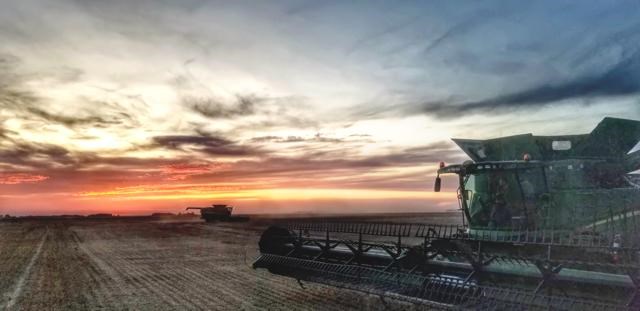An axiom of volunteers is that if you want something done, you find the busiest person in the community and it will get done – a truth that Fillmore producer Russ Leguee knows all too well.
Besides farming with his family near Fillmore, he is the reeve of the RM of Fillmore, and serves as a First Responder, an emergency medical responder and a volunteer fire fighter, among other things. He spoke about his life as a First Responder and volunteer EMR in a presentation to the Weyburn Rotary Club via Zoom.
As he explained, it takes a team to make it all work, and his family forms that team for all of the activities and the volunteering they do. Russ and wife Sharon farm with daughters Sarah and Amber, and her husband Erik Nikolejsin, and son Jake.
“This family team makes it possible for me to do what I do,” he said, noting he began as an RM councilor in 2001, and in 2003 the Fillmore Ambulance was in need of people, so he took courses in CPR and first aid, and began life as an emergency medical responder.
“At the same time, the fire department needed volunteers. It seemed they all fit together in one way or another,” said Leguee, noting that when he’s on call as an EMR, he gets 2.19 an hour, plus $100 per call.
As a first responder, “every time there’s a call, if it’s an emergency call, it fans out to all of us, and if we’re available we’ll dash out. We do have a first responder bag that’s full of just about everything you can imagine, and we’ve added an auto defibrillator because we’re just too far away from anyone,” he said. “We cover a large area, as we are backup for Stoughton, Kipling and Indian Head. We operate with nine active members, including three primary care paramedics and six EMRs, and we also have a nurse practitioner as a first responder, so it’s nice to have that.”
Leguee is on call about five to six days a month, 24 hours a day, and carry a radio with him while he’s on his farm.
“We don’t sit at the ambulance garage waiting for a call, we’re at home farming. Sometimes I can go an entire shift and not get a call, sometimes you get three in a day. You just don’t know when you have that radio on your belt. It’s like a little time bomb, you never know when it’s going to go off,” said Leguee.
When they do go out on a call, they will be gone for a minimum of four hours as they are a distance from any hospital. They go to the scene of the call, do their work and then go to a receiving hospital, which could be Estevan, Weyburn, Arcola, Kipling, Indian Head, or the Regina General or Pasqua.
“We’ve also had the privilege of working with STARS. They are a great group of people, if you ever get a chance to support them,” he said. “They can get here in a hurry and really take control of the situation if we’re in a little deeper than we can handle.”
Leguee estimates they respond to about 180 calls a year on average, “so you just never know what’s going to come.” About half of the calls are medical or are a transfer of a patient from one facility to another, and a small percentage are a dire life-or-death emergency call.
“It’s tremendously rewarding for me to help someone out on what might be the worst day of their life, and as much on the other side, it’s disheartening if you can’t help or they just gone too far and there’s nothing you can do,” said Leguee, adding that after every call he goes back over the incident in his head to think about what happened, and what he could’ve done better.
He has been president of the Fillmore EMS since 2006, and figures 2021 will likely be his last year in this position. Even if he steps down from this position, he said he will continue with his training for a while, noting his son Jake is also a member of the EMS crew.
“He and I can trade off shifts, and cover each other for an hour or two. He’s very good at it, so he’ll be doing this for a long time,” he said, adding that his daughter Amber is a nurse at the Weyburn General Hospital, and will sometimes come out on her days off to do a shift or two during the day if the family has field work they need to do.
“But in order for that to happen, Sharon has to be available to look after the kids in a heartbeat. That’s part of our team effort,” he explained.
There are occasions when they come on a scene and it involves people they know. Even if there was a death at the scene, they are able to stay behind and offer help and comfort to the family, sometimes even helping them make phone calls to make arrangements, as “sometimes they just don’t know what to do.”
He added, “The tough ones do leave a bit of a scar, and there’s not much you can do about that.”
Rotary member Duane Schultz noted he used to work in mental health and addictions, and advocated for critical incident stress debriefing for emergency responders. He asked if he or other Fillmore members have been able to make use of that.
“One of the members works for Victim Services, and she’s able to recognize when we do a debriefing if we need to go further, she’s able to refer us so we do have that available,” said Leguee.




